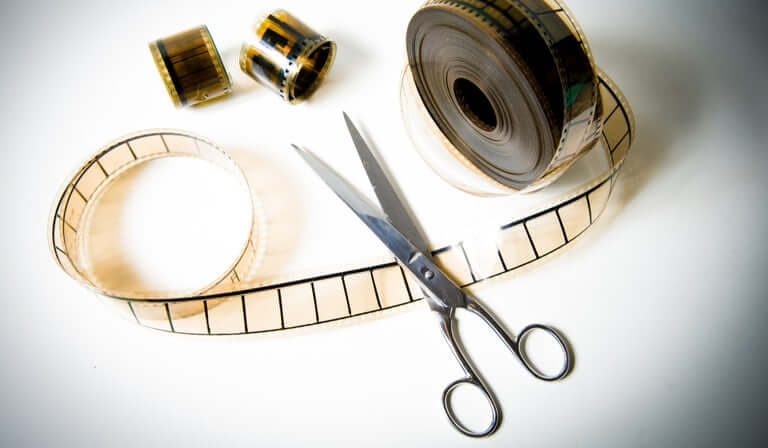Surviving the edit
Ever had to take your nice brand video – with its clever narrative and stunning images – and brutally cut it down? Maybe take a whole minute off, so it meets the constraints of a new platform? Then you’ll know the pain and the pragmatism of editing.
Protest is useless. Some stuff has to go. But what? Through the rounds of trial and error it becomes apparent that, crudely, you can break down the shots into three groups. First, those that are essential for the narrative to work, without which the whole thing stops making sense. Second, those that you could theoretically lose but which, if you did, would diminish the pleasure of the whole. You might try taking out that sunrise shot, for example, in a bid for ruthless efficiency, but quickly reinsert it for its pure, unalloyed joy.
Third, though, is the stuff that – to your initial surprise – you can jettison without shedding tears. The director’s show-off shots, those extra little scenes that reinforce without revealing anything new, reaction shots that add neither to the narrative nor the joy, and beauty shots that just aren’t quite beautiful enough. Cut, cut, cut. They’re gone. And even then, across all the shots that somehow manage to remain in the edit, there is still scope to put the scissors in and trim a few frames off here and there.
And a funny thing happens when this new shortened edit is finally bang on length. While definitely not as fulsome and luxuriant as the original, it stands up and gets on with its job and retains a kind of lean dignity, nonetheless. If someone offered you a free 10 seconds more to squeeze in some of those borderline shots, you’d probably decline. It works as it is.
Editing is a fact of life. When circumstances change, when constraints bite, stuff has to go. You tighten a presentation, shorten a report, reduce a CV. And in doing so, you quickly reacquaint yourself with what matters most.
So, understand this. Right now, and for the foreseeable future, consumers are the ones editing. Circumstances have changed and a constraint called inflation is taking a savage bite. So, whether consciously or otherwise, consumers will be looking at the brands that currently feature in the movies of their lives, and they will cut. Nothing personal; that’s just the way it is. And even for the brands that manage to remain in the edit, there will be a little trimming back here and there – a little less purchase frequency.
Where might that leave your brand? Well, the crude rule-of-three will apply.
Group one: the must-haves. Is your brand one that consumers would feel is essential to the quotidian rhythms of life, without which the daily narrative would be disrupted? If it is to be a contender here, you will need to have kept innovations coming, earned a reputation for reliability and communicated not just fluffy emotion but hard efficacy: painkillers that work fast; cleaning products that are tough on grime but kind to the environment; haircare that achieves beauty through health; everyday foods that are simple, nutritious and tasty enough that kids will eat. This is a fine group to be in.
 Group two: the joy-spreaders. A lot of brands compete in this space, but not all of them do it well enough. To be a contender, your brand will need to have focused hard on all the nuances of design, communicated meaning with intelligence and grace, and taken time to build emotional connection. Consumers aren’t going to abruptly cut chocolate, lipstick, fashion, holidays or entertainment from their lives and stories – but they are going to prioritise the brands that can carry that sense of specialness all the way through to the tiniest details.
Group two: the joy-spreaders. A lot of brands compete in this space, but not all of them do it well enough. To be a contender, your brand will need to have focused hard on all the nuances of design, communicated meaning with intelligence and grace, and taken time to build emotional connection. Consumers aren’t going to abruptly cut chocolate, lipstick, fashion, holidays or entertainment from their lives and stories – but they are going to prioritise the brands that can carry that sense of specialness all the way through to the tiniest details.
Let’s not get too didactic here. There are of course brands that can straddle these two desirable groups – bringing efficacy and joy together. It’s a trick that tech brands have been known to pull off. If yours is one such, it makes the edit, for sure.
But here’s where no marketer wants to be: group three. The me-too brands with anaemic proof points, the brands that haven’t innovated to break new ground, the brands that try to feel special but let customers down in areas like service support or home delivery. Sometimes, these will be brands that consumers have bought out of habit for a while, not noticing the little compromises, inadequacies and tendency to take for granted. Well, they’ll notice now. And guess what? Cut, cut, cut.
And the problem with not making the edit is that exclusion may not be temporary. Yes, it is an edit dictated by new constraints – but that does not mean that when times are kinder and money is easier again, consumers will be inclined to reinstate the brands they have pragmatically jettisoned. They’ve learned to live without them, and their lives are working just fine, nonetheless.
For those brands that do make the final consumer edit, there will still be a little trimming here and there. This is not the time to resist but to understand. Find ways to help your consumers manage the cost, advise them on how to get the maximum from the interaction and – dependent on category – consider helpful add-ons like no-quibble guarantees, to take the risk out of purchase.
Be grateful. You made the edit. You can live with a little trimming. Far better that than to be one of those brands on the equivalent of the cutting room floor.
